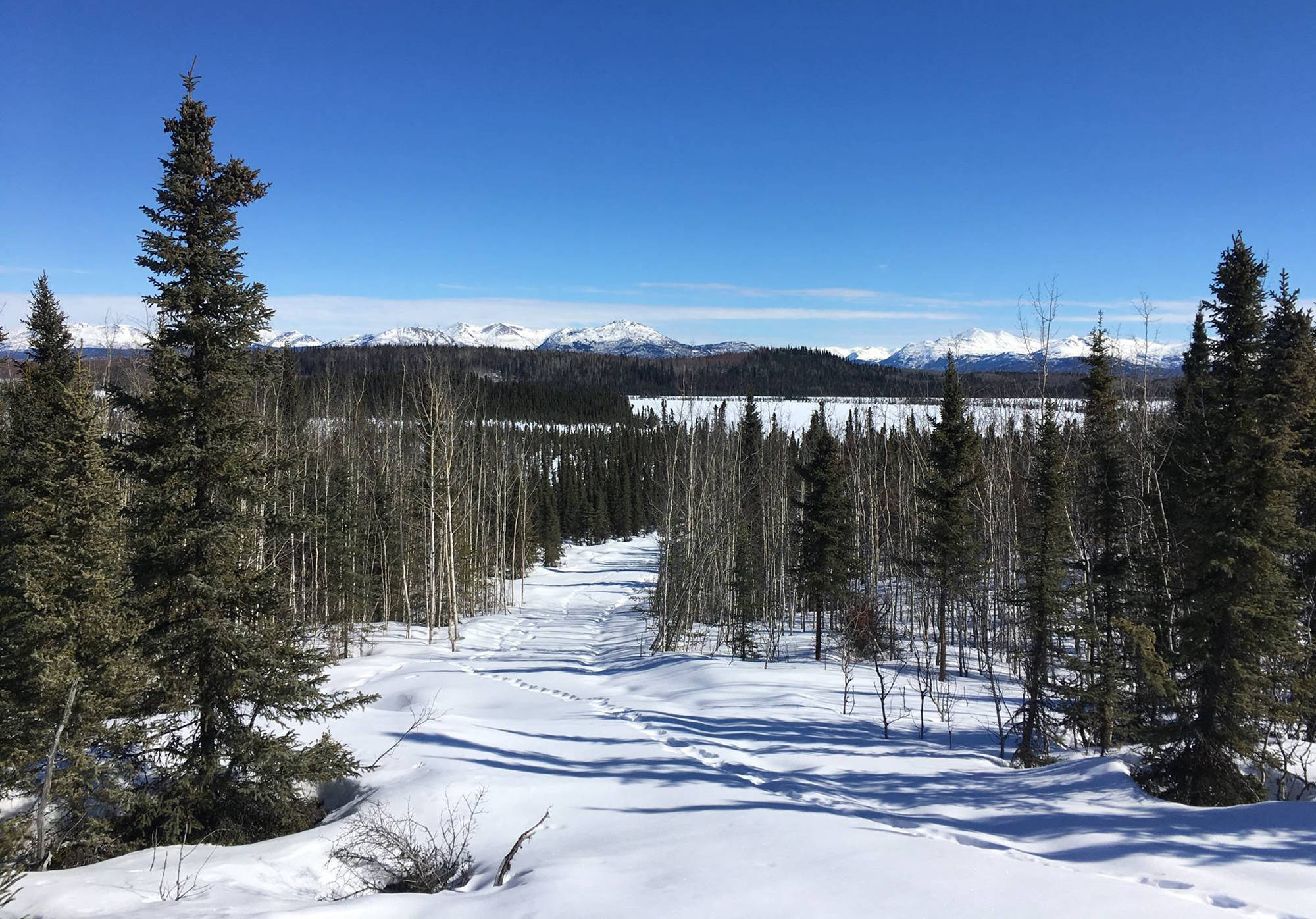As March becomes a distant memory, time does remain for some end-of-the-season skiing or snowshoeing before spring finally decides to roll into town. I’ve been told by far wiser and experienced skiing gurus that the conditions are still excellent to get out and hit the trails especially on a cold morning. If a last minute winter adventure sounds like your cup of tea, then allow me to convince you to try a new trail in the Skilak Wildlife Recreation Area (SWRA): the Marsh Lake Trail.
If you are at all familiar with the trails in the SWRA you are probably thinking, “What Marsh Lake Trail?” In all honesty, that line of thinking is completely justified since the trail and parking area won’t be completed until this summer. However, don’t let that stop you from getting an early start on the three miles of trail that are ready for use.
Marsh Lake Trail came into existence during the 2015 Card Street Fire when a fuel break was created that became the foundation for the trail. Not ones to miss out on a golden opportunity, the visionary minds at the Kenai National Wildlife Refuge took full advantage of the lemons, a wide and rough “cat trail” they were handed, and made some very tasty lemonade in the form of a diverse and exceptional trail.
This lovely lemonade has many highlights that will surely have you itching to check them out for yourself. Marsh Lake Trail will take you on a journey through recently burned areas and mature boreal forest. This mix of forest habitat makes for abundant opportunities to bird and view wildlife, and an excellent place to observe tracks in the snow. I saw tracks of moose, spruce grouse, coyotes, snowshoe hares, red squirrels, shrews and lynx using the fuel break as their own personal highway. Of these animals, my recent trip afforded me a good look at a browsing moose.
Even if you don’t happen to luck into an exceptional wildlife viewing opportunity, the views that this trail gives of the Kenai Mountains and the Tustumena Bench Lands are worth the trip themselves. Several open areas along the trail provide amazing views as well as a rewarding overlook of Marsh Lake at the trail’s terminus. Just a few reasons you shouldn’t forget your binoculars and a good camera.
Excited yet? Before you dive head first onto the trail, here is a brief overview of the trail as of Monday, March 27. The first mile of the trail has seen a decent amount of traffic and is packed down for snowshoes, but a little difficult on skis since it’s quite slick. Fortunately, the newly fallen snow from Tuesday and onward should have remedied this situation for skiers.
After the first mile, the trail is free of human traffic with the exception of a lone and slightly insane skier, yours truly. The snow made for great skiing, even for one such as me with a meager 6 days of classic skiing experience under my belt. More proficient skiers will have an easier time, especially on some of the steeper hills. Though the steep hills are few in number, I did encounter one which I jokingly named “The Bad Hill,” where I was forced to take off my skis and trek up it on foot. “The Bad Hill” will pose a worthy challenge even for veteran skiers, but the top offers an excellent view that makes it worth the effort. The snow itself varied along the trail due to sun exposure, making some areas great for gliding, while others turned my ski trip into brief bouts of “ski-shoeing.”
With these conditions in mind, I highly recommend packing a pair of snowshoes just in case things get particularly dicey in skis. Another recommendation for your pack is to have plenty of water and high energy snacks which will make the 6-mile roundtrip much more manageable and enjoyable. Be sure to dress in layers and be prepared for a longer time on the trail than you expect. It took me 3 hours to ski the 3 miles going out to the hill overlooking Marsh Lake. The return trip was much easier and took half the time.
Whether you have the time or need to make time, be sure to tackle the Marsh Lake Trail before the snow disappears! Speaking of time, take your time as you go to ensure you don’t miss any of the wildlife treasures this trail holds for those bold enough to give it a go! But, if you can’t make it out for the snow, the trail will still be around for summer hiking and would make a great spot to have some “lemonade” or a picnic.
Happy trails, fellow adventurers!
Travis Mabe is a Student Conservation Association intern focusing on environmental education and assisting with visitor services for 9 months this year at the Kenai National Wildlife Refuge. Find more information about the Refuge at http://kenai.fws.gov orhttp://www.facebook.com/kenainationalwildliferefuge.

